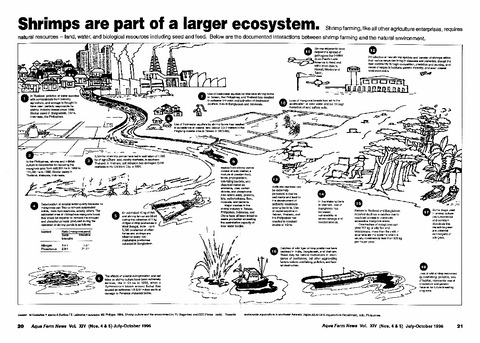Will microbial manipulation sustain the ecological balance in shrimp (Penaeus monodon) hatcheries?
| dc.contributor.author | Lavilla-Pitogo, C. R. | |
| dc.contributor.author | Albright, L. J. | |
| dc.contributor.author | Paner, M. G. | |
| dc.contributor.editor | Flegel, Timothy W. | |
| dc.date.accessioned | 2011-06-22T09:35:45Z | |
| dc.date.available | 2011-06-22T09:35:45Z | |
| dc.date.issued | 1998 | |
| dc.identifier.citation | Lavilla-Pitogo, C. R., Albright, L. J., & Paner, M. G. (1998). Will microbial manipulation sustain the ecological balance in shrimp (Penaeus monodon) hatcheries? In T. W. Flegel (Ed.), Advances in Shrimp Biotechnology : Proceedings to the special session on shrimp biotechnology, 5th Asian Fisheries Forum, 11-14 November 1998, Chiengmai, Thailand (pp. 185–192). Bangkok, Thailand: National Center for Genetic Engineering and Biotechnology. | en |
| dc.identifier.isbn | 9747578026 | |
| dc.identifier.uri | http://hdl.handle.net/10862/424 | |
| dc.description.abstract | A shift in preferred methods employed to contain bacterial diseases in the hatchery phase of shrimp culture has resulted largely from the unsuccessful control by and deleterious effects of chemotherapy. Manipulation of hatchery microbial ecology has gained popularity, but for successful implementation, this niche-filling approach requires a thorough understanding of the epidemiology of bacterial diseases in the hatchery. This study examined the responses of Vibrio harveyi populations, (associated with luminescent vibriosis in shrimp larvae) to various physico-chemical factors and various hatchery components. Results showed that V. harveyi had a wider range of tolerance to environmental parameters than larvae of Penaeus monodon, such that control measures based on manipulation of these parameters might not be feasible. However, it was evident from the results that there were components in the shrimp hatchery environment that could be manipulated to control high populations of V. harveyi. The natural microflora of seawater, as well as the microbial flora associated with the diatoms Skeletonema costatum and Chaetoceros calcitrans negatively affected the survival of V. harveyi in experimental mixed cultures. The successful manipulation of such benign microbial components to compete with and exclude potential pathogens is necessary to sustain ecological balance in the shrimp hatchery environment. | en |
| dc.description.sponsorship | We thank the International Development Research Centre (IDRC) of Canada for funding the research under Project 3-P-88-1053-02. Sheila Mae Buen provided excellent help with the graphs. | en |
| dc.language.iso | en | en |
| dc.publisher | National Center for Genetic Engineering and Biotechnology | en |
| dc.subject | Crustacea | en |
| dc.subject | hatcheries | en |
| dc.subject | microbial ecology | en |
| dc.subject | Luminous bacteria | en |
| dc.subject | Philippines | en |
| dc.subject | prawns and shrimps | en |
| dc.subject | Giant tiger shrimp | en |
| dc.subject | Penaeus monodon | en |
| dc.subject | Vibrio | en |
| dc.subject.lcc | VF SP 0228 | |
| dc.title | Will microbial manipulation sustain the ecological balance in shrimp (Penaeus monodon) hatcheries? | en |
| dc.type | Conference paper | en |
| dc.citation.spage | 185 | |
| dc.citation.epage | 192 | |
| dc.citation.conferenceTitle | Advances in Shrimp Biotechnology : Proceedings to the special session on shrimp biotechnology, 5th Asian Fisheries Forum, 11-14 November 1998, Chiengmai, Thailand | en |
| dc.subject.asfa | shrimp culture | en |
| dc.subject.asfa | ecological balance | en |
| dc.subject.asfa | vibriosis | en |
| dc.subject.asfa | bacterial diseases | en |
| dc.subject.asfa | Bacteria | en |
| dc.subject.asfa | pathogens | en |
| dc.subject.asfa | Bacillariophyceae | en |
| dc.subject.asfa | lymphocytes | en |
| dc.subject.scientificName | Penaeus monodon | en |
| dc.subject.scientificName | Vibrio harveyi | en |
Files in this item
| Files | Size | Format | View |
|---|---|---|---|
|
There are no files associated with this item. |
|||
This item appears in the following Collection(s)
-
Conference Proceedings [299]




